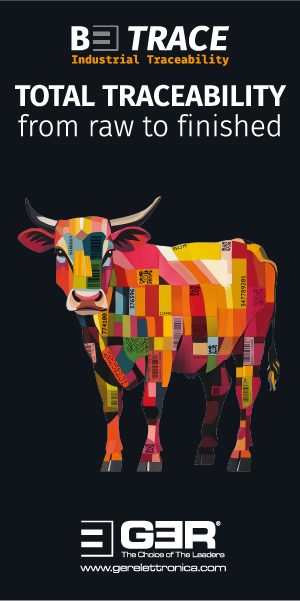Market Intelligence—23.04.24
Macroeconomics
Military conflicts have remained the dominant events in politics and the economy in recent weeks. The world is watching the situation in the Middle East, particularly with regard to oil supplies and oil prices. Any escalation would probably have a considerable impact on the supply of oil from that region.
In addition to political issues, the topic of inflation remains the second area that is currently occupying the media the most in terms of politics and economics. Although the statistical data suggests a further easing of prices, many factors are currently unclear as to whether there will be a further reduction in the price trend to the 2% corridor desired by the national banks. In addition to the sharp rise in costs, the issues surrounding energy prices remain a factor that makes further price trends very difficult to predict at present. In the background, politicians are pushing for falling interest rates, as national budgets are suffering massively from the increased financing costs of their deficits. However, the national banks are currently reluctant to repeat this mistake of excessively low interest rates. The markets are still suffering from the consequences of the last phase of low interest rates.
In China, the latest statistical data on economic development has been published. The official figures show economic growth of over 5%, which would basically fulfil the government’s expectations exactly if the figures are accurate. While private consumption increased slightly in March, the data from the manufacturing sector was less positive. The significant decline in cement production was particularly noticeable, although this is not surprising in view of the difficulties in the property sector in China.
In the first quarter, the financial markets took relatively little notice of the problems that could potentially await investors. In the meantime, the picture has changed somewhat and at least the stock markets have ended their one-way upward trend in recent weeks. Moderate corrections can be seen everywhere at the moment and the individual sectors of the stock markets are not currently showing a uniform trend either.
Gold, on the other hand, continues its strong performance of recent weeks and months. Strong gold buying, above all from China and India, is currently driving the price to new heights and we are now well above 2,300 per ounce. If gold continues to prove itself as a safe haven in these uncertain geopolitical times, prices of USD 2500 or even more no longer seem unlikely.
The oil market reacted to the military tensions in the Middle East, but not nearly to the extent that one might have expected. Despite all the risks, the oil price was unable to record any further major gains and quickly fell back again after the markets developed the feeling that escalation in the Middle East can still be avoided. Many major banks are forecasting oil prices that would reach triple-digit levels again. However, everything is linked to further political developments in the Middle East. There is absolutely no oil supply shortage at the moment and if you look at the exports of the sanctioned producers (primarily Russia, Iran, Turkey and Venezuela), it becomes clear that the sanctions have no effect whatsoever, except that large consumers such as India and China have the opportunity to purchase oil from these producer countries at prices far below market levels. This fact not only leads to distorted energy costs overall, but also burdens the cost of energy for European producers. Another significant competitive disadvantage for the leather industry.
The US dollar continued to gain in value, mainly due to the fact that interest rates in the US are not expected to be cut as quickly as they were a few months ago. The US dollar ended the last period with values below $1.07 to the euro.
Leather Pipeline
There have been no major changes along the leather pipeline. All the facts and analyses published in recent months remain valid. Hopes of a turnaround and a significant improvement in the situation have not materialised in recent weeks either.
The performance of leather production in Asia and Europe remains very different. Even though there has been little positive news from the leather industry in recent months, particularly from China, it was nevertheless clear that leather production was significantly higher than in Europe, not only in China but throughout south-east Asia and on the Indian sub-continent. Of course, this relates to different markets and price levels, but the different developments were nevertheless remarkable.
However, our expectations regarding the usual seasonal slowdown in the second quarter now seem to be materialising at great speed. All reports and information from our various sources in Asia are now reporting significantly lower incoming orders and, in China in particular, there is a lack of sufficient export orders to maintain the capacity of leather factories and leather processing industries in the coming weeks and months. Even though hope always dies last, there are unfortunately still no serious signs that new and unexpected orders will suddenly be placed. Apart from the question of how well the general consumption of leather articles is going, orders in the coming weeks and months would be a surprise, if only because of the seasonal situation.
In other Asian countries, which have already benefited from a shift in leather production in recent months, there are reports of fully utilised capacities, but these are the processing of orders that were placed some time ago. Here, too, there is an urgent need for new orders to be placed in the coming weeks or months. Basically, we are now in a period in which no major impetus is to be expected.
We have spent a lot of time in Europe over the last two weeks talking to too many industry representatives along the supply chain about the situation. Our scepticism and our assessments are well known and we had actually hoped that our doubts and reservations could be dispelled. Unfortunately, the opposite is the case and the problem is not so much the situation itself, but rather the extent to which the problem is fundamental and structural, or whether it is simply a consequence of the many difficulties in the markets , supply chains and in the expectations of the retail trade.
The core statements that almost everyone makes after intensive enquiries are basically always the same. In addition to the fact that the overall order backlog is simply too low for the time of year, they are struggling with the fact that no predictable and longer-term orders can be obtained from customers for consumer goods at the moment. For those who are still manufacturing products that are convincing in terms of quality and price, orders are coming “in dribs and drabs”.
Neither the volume of individual orders is sufficient, nor the timing. Almost everyone, nevertheless, reports the same situation. Small quantities, extremely short delivery times and no reliable information about what will happen in the coming months.
Of course, geopolitical developments will play a major role, but to be honest, the behaviour is not entirely understandable. It may be largely due to the fact that brands and retailers made big mistakes in their post-coronavirus planning. Their expectations were too positive, the orders were too large and as a result they have had to deal with excessive stock levels for a very long time. In order to avoid this again, and possibly because they are still being forced to sell old stocks first, they are ordering only what is absolutely necessary.
In addition, there is of course the question we have discussed so often about the role leather plays or will play in the production of mass consumer goods, now and in the future.
Even if many people doubt it, every statistic shows that the consumption of leather in the production of consumer goods has been steadily declining in recent years. A tipping point occurred sometime around 2016. The general trend has always been masked by temporary fluctuations and the automotive industry and luxury goods manufacturers also played a decisive role until a few years ago, but the decline in demand has basically been greater than the available raw materials and processing capacity.
At the moment, price pressure and weak demand combined with excessive inventories along the supply chain seem to have created a toxic mix. The middle and higher price segments, which are traditionally covered by the European leather industry, are particularly affected. In Europe, every opportunity is currently being taken to reduce or temporarily shut down production capacities. There are a number of public holidays coming up in the next few weeks and quite a few companies are considering extended closures because the order situation simply does not make production necessary.
Things are just as they are at the moment and in all discussions, especially with European manufacturers, the only hope is that they can successfully survive the period until after the summer holidays.
The split market is also not providing any news at the moment that goes beyond what has been known for some time. For leather production in Asia, favourable splits for suede are still being sought. However, as always, price remains the decisive factor. In Europe, low production levels play a decisive role in the supply of lime splits. However, it is clear that only the supply of production capacity plays a decisive role in demand here. There is currently no real need for higher quantities. The extent to which the industry will then consider adjusting capacity will probably also have to be decided over the summer. Here, too, it is important to think very carefully and analyse what quantity of raw materials from the leather factories clients can plan and expect in the medium term.
We are also in a transitional phase with sheepskins. We still do not know whether our fundamental optimism regarding the market for leather garments is justified or not. We also do not know whether the major retailers will jump on the trend and place larger orders for leather garments. Leather will certainly not become cheaper than it is today and if the material cannot regain market share now when prices are low, then it will certainly become even more difficult in the future.
Nevertheless, at the moment we remain convinced that at least in this sector the chances are possibly better than in many others.
Over the next few weeks, we will be monitoring developments even more closely, especially in the tanneries. You can almost feel it with your hands that a lot of thought is going into how to assess the future. Without a real, well-founded hope for recovery in the order situation, it is difficult to look positively into the future. Who can reliably plan the supply of raw materials, labour requirements and the purchase of all other operating resources? A large number of the necessary production resources cannot be procured or made available from week to week or month to month. Without a reliable planning basis, this is known as flying blind commercially.
The problem is probably less evident in large and financially stable companies, but much more so in smaller and medium-sized companies, which may be too large for flexible niche production. We are still in April and there is still some time before the summer holidays, the next six or eight weeks will be of crucial importance for the leather pipeline and our interest will be on whether the retro trend which supports leather can be extended and expanded.












